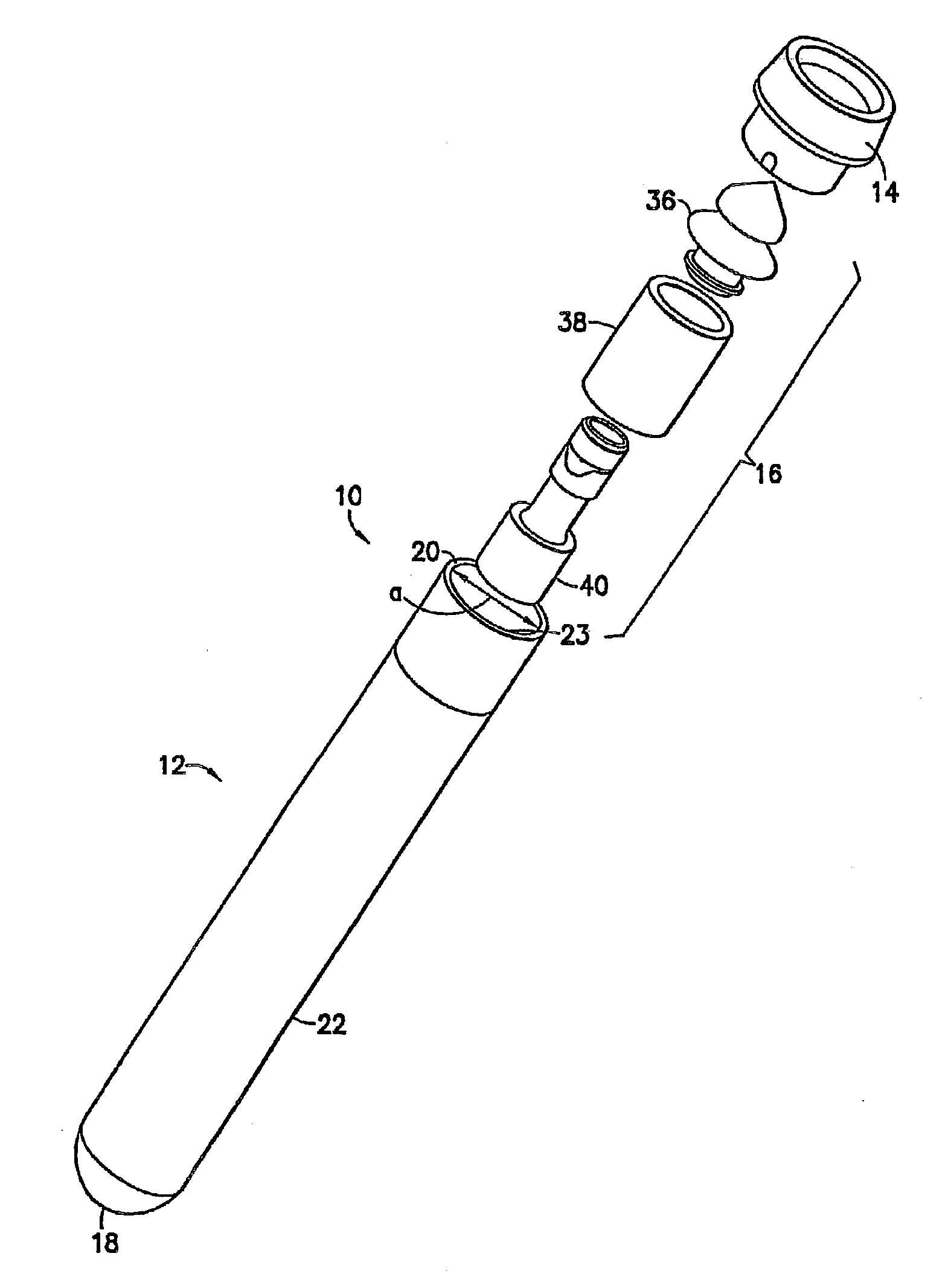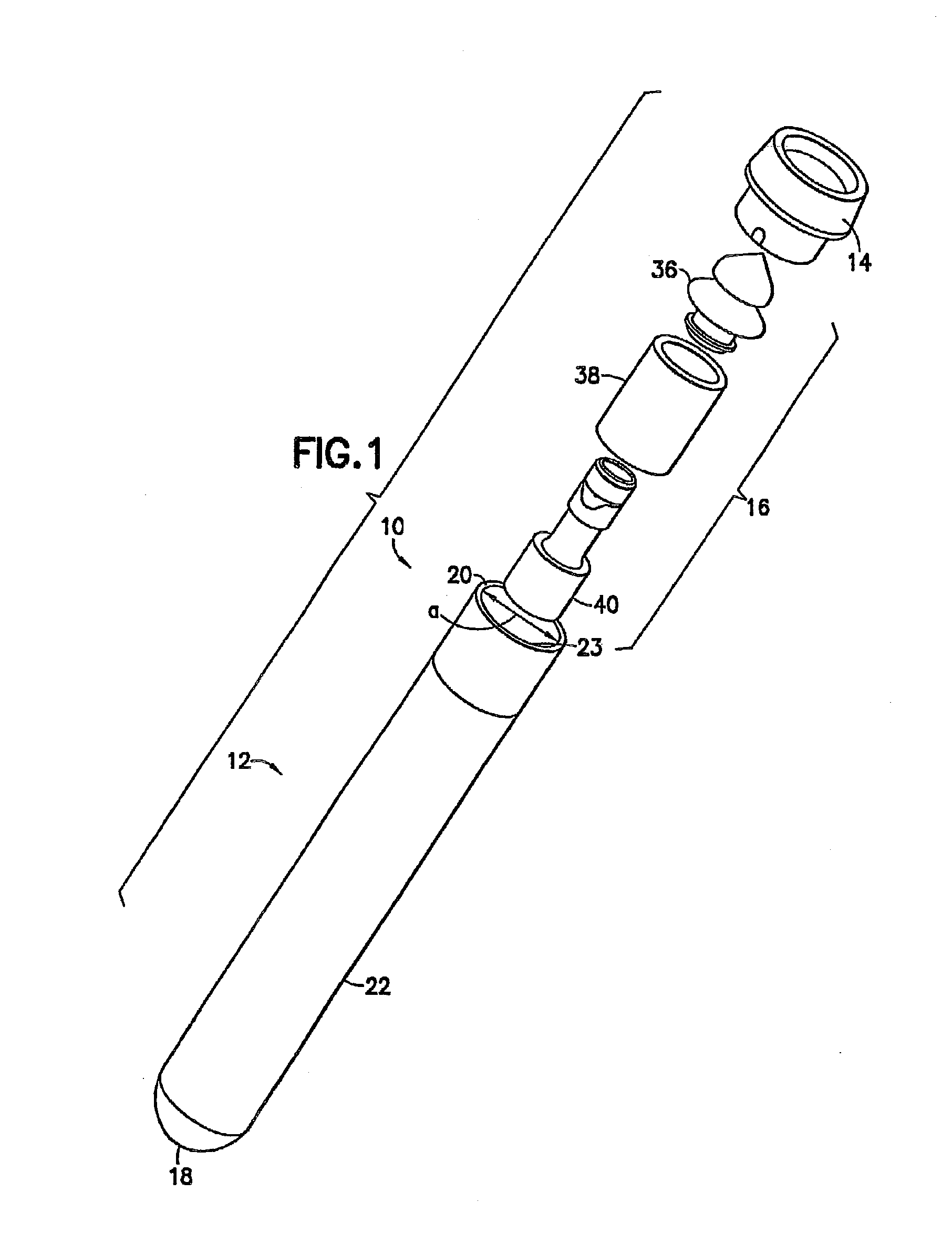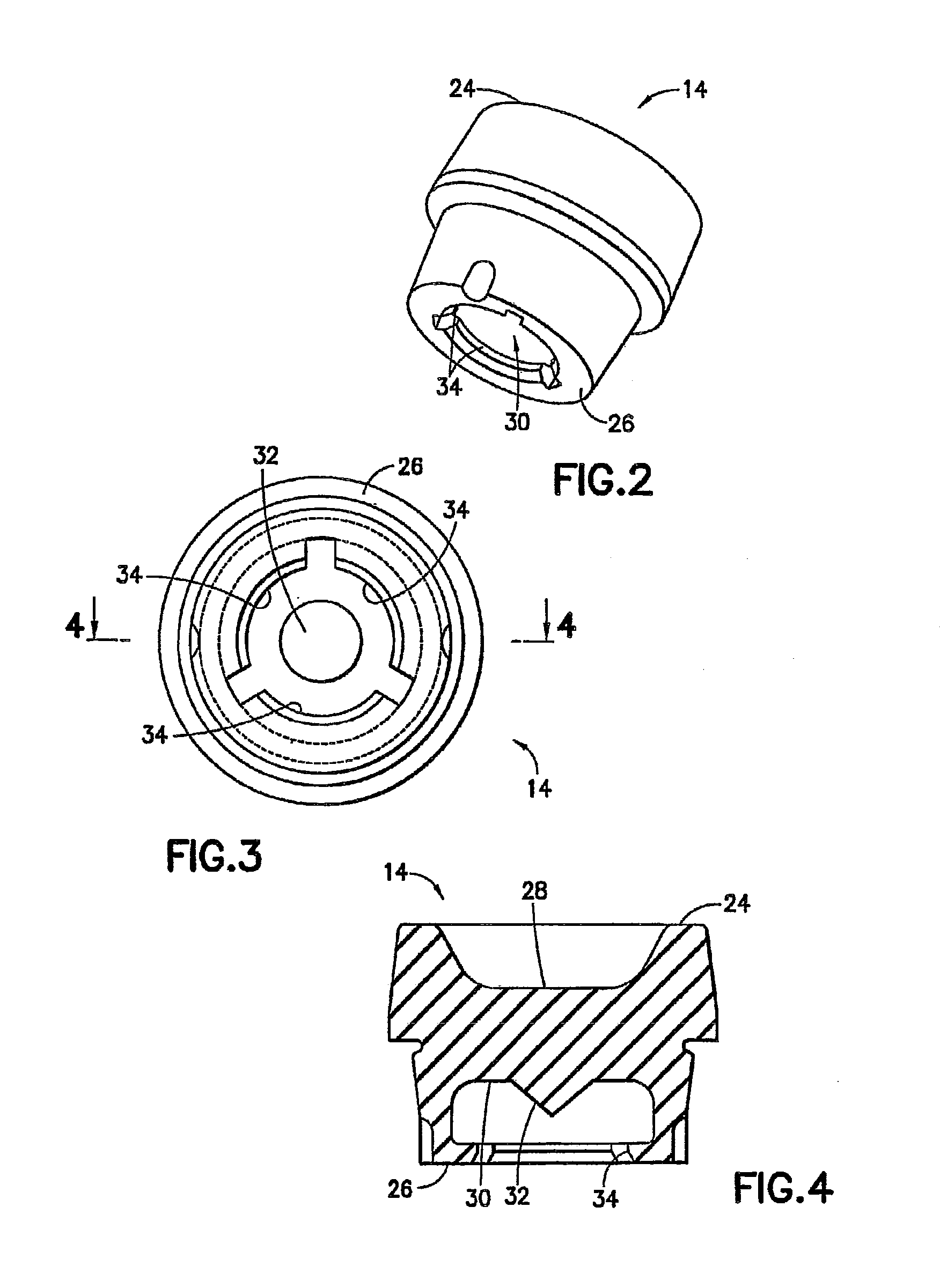Device For Separating Components of a Fluid Sample
a technology for fluid samples and components, applied in separation processes, centrifuges, laboratory glassware, etc., can solve the problems of clogging measuring instruments, affecting the operation of instruments, and limiting the shelf life of products
- Summary
- Abstract
- Description
- Claims
- Application Information
AI Technical Summary
Benefits of technology
Problems solved by technology
Method used
Image
Examples
Embodiment Construction
[0040]In one embodiment, the separator includes opposed top and bottom ends and comprises a bellows, a ballast, and a float. The separator is disposed in the tube at a location between the top closure and the bottom of the tube. The components of the separator are dimensioned and configured to achieve an overall density for the separator that lies between the densities of the phases of a fluid sample, such as a blood sample.
[0041]The bellows of the separator is molded from a resiliently deformable material that exhibits good sealing characteristics when placed against an adjacent surface. The bellows has an upper end that is at or in proximity to the top end of the separator, and an opposed lower end that is disposed between the opposed ends of the separator.
[0042]The upper end of the bellows may be formed from a material that may be pierced by a needle cannula for depositing a fluid sample into the tube. Additionally, the upper end of the bellows initially may be engaged releasably...
PUM
| Property | Measurement | Unit |
|---|---|---|
| densities | aaaaa | aaaaa |
| density | aaaaa | aaaaa |
| rotation | aaaaa | aaaaa |
Abstract
Description
Claims
Application Information
 Login to View More
Login to View More - R&D
- Intellectual Property
- Life Sciences
- Materials
- Tech Scout
- Unparalleled Data Quality
- Higher Quality Content
- 60% Fewer Hallucinations
Browse by: Latest US Patents, China's latest patents, Technical Efficacy Thesaurus, Application Domain, Technology Topic, Popular Technical Reports.
© 2025 PatSnap. All rights reserved.Legal|Privacy policy|Modern Slavery Act Transparency Statement|Sitemap|About US| Contact US: help@patsnap.com



